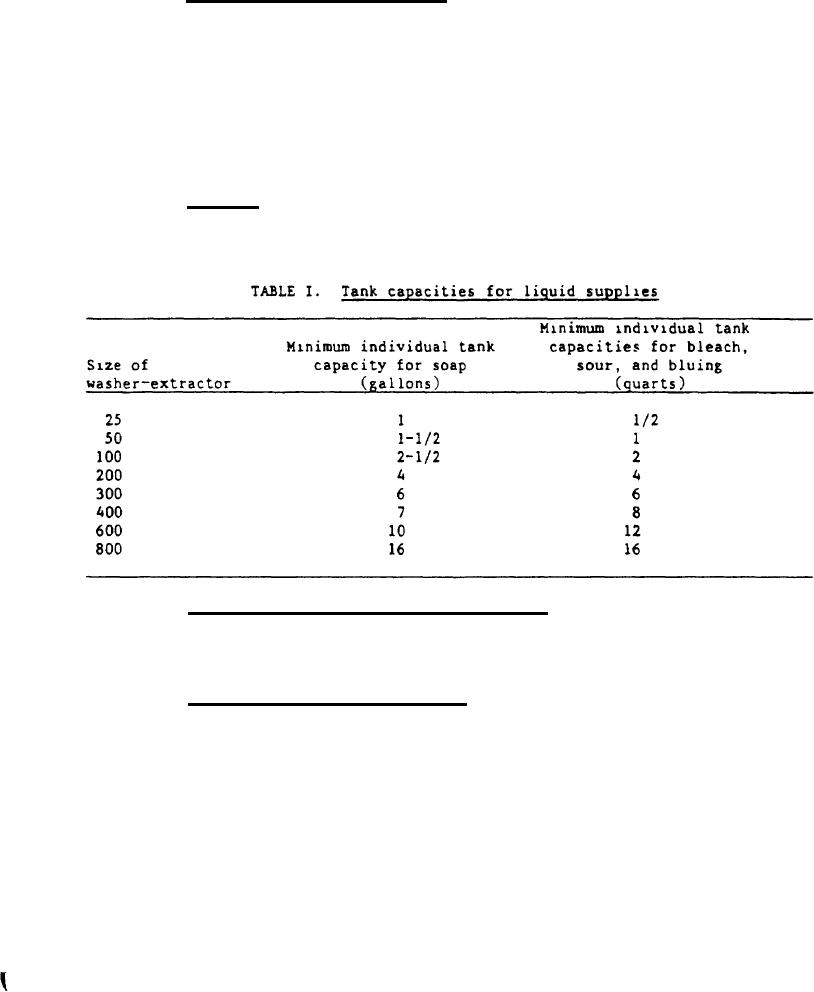 |
|||
|
|
|||
| ||||||||||
|
|  MIL-W-43001F
3.5.1.5 Supply system tanks and trays. When a dry supply system is speci-
fied, the material used for the tanks, trays, and containers shall be corrosion-
resistant metal (see 3.4,1), molded rubber, or plastic material except for the
bleach tank or tray which shall be corrosion-resisting steel or plastic. When a
liquid supply system is specified the material used for the tanks, trays, and
containers shall be corrosion-resistant metal (see 3.4.1). The bleach container
shall be corrosion-resistant metal or plastic. The tanks, trays or containers
shall be mounted on a separate stand or be attached to the washer-extractor.
When specified (see 6.2), provisions shall be provided for connecting the
machine to a central circulating soap supply system,
3.5.1.6 Flushing. Provisions shall be made for flushing out the tanks,
trays, and containers automatically after the completion of each formula for the
soap container and after each injection of supplies for the remaining containers
(see 4.6.1).
3.5.1.7 Applicability of current characteristics. The electrical parts of
machines shall be designed for the voltage, frequency, and number of phases
specified (see 6.2). Operational and functional testing shall be performed at
the voltage, frequency, and number of phases specified.
3.5.1.8 Interlocking and safety devices. The driving arrangement of each
machine shall provide clutching or other means permitting changing from washing
to extracting cycle and vice versa with interlocking means to insure smooth
transfer. A brake interlock switch shall be provided to prevent operation of
the cylinder with brake applied (except for inching or positioning) (see
3.5.2.9). When a door is opened while the cylinder is in motion, the interlock
device shall operate immediately to disconnect power to the motor or motors,
apply the brake, and stop the cylinder. The drain valve shall be electrically
interlocked so that the extract operation cannot commence or continue with the
drain valve closed. The steam valve shall be interlocked so that seam will not
11
|
|
Privacy Statement - Press Release - Copyright Information. - Contact Us |